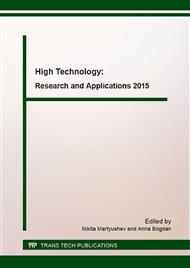p.930
p.934
p.939
p.943
p.948
p.952
p.957
p.962
p.967
Allocation of Clusters of Objects on Topological Graphs of High Cardinality
Abstract:
Distributed systems containing hundreds or thousands of objects, are generally constructed in the form of hierarchical structures. In these structures, the lower level objects in the subset are combined for connecting to centers. Existing algorithms are not able to successfully meet the challenges of structuring on the sets of such dimension. Therefore, new algorithms suitable for solving the problems of structuring on the sets containing thousands of objects are necessary. The authors developed an algorithm to form objects clusters for high cardinality sets, with up to a thousand or more objects located in a given area. The algorithm is developed with the help of graph theory, design and analysis of algorithms efficiency, compact partitions theory, compact sets of objects and their clusters. Geographical location of a set of objects of a distributed system is considered as a topological graph. To improve the efficiency of the algorithm of forming compact sets and clusters allocation the concept of the zone of active search for nearby vertices is introduced. That enables the possibility to replace a matrix of distances between the vertices to list of vertices incidents formed on the basis of active search zone. An algorithm for the approximate solution of clusters allocation of topological graph objects represented by a list of vertices incidents is developed. The algorithm recurrently increases the cardinality of compact sets for each object and analyzes acquired clusters. Algorithm description is accompanied by an example.
Info:
Periodical:
Pages:
952-956
Citation:
Online since:
February 2016
Authors:
Price:
Сopyright:
© 2016 Trans Tech Publications Ltd. All Rights Reserved
Share:
Citation:


